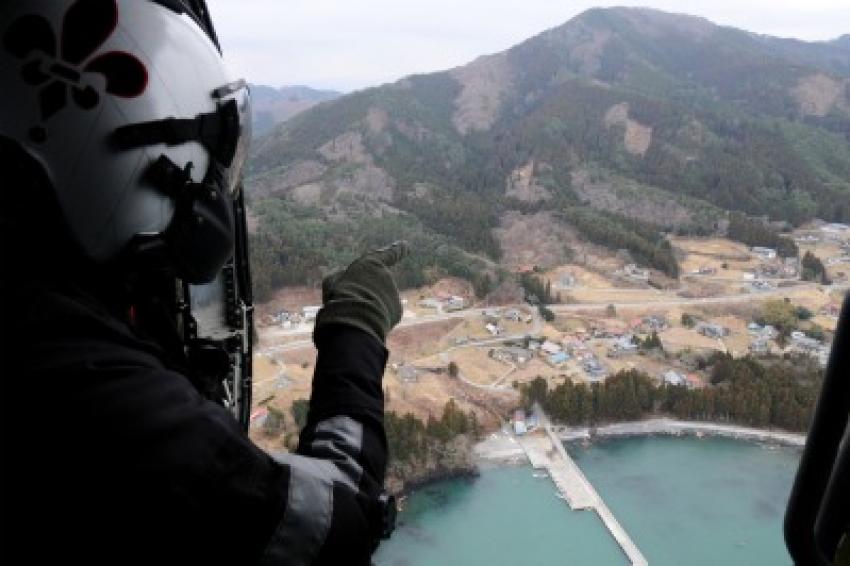Japan Crisis Day 6: Most Recent Developments
Fire Reported at Fukushima's No. 4 Reactor
Following are main developments after a massive earthquake struck northeast Japan on Friday and set off a tsunami.
• Public broadcaster NHK says flames are no longer visible at a building housing the No.4 reactor of a nuclear plant in Fukushima, 240 km north of Tokyo, hours after the operator reported fire had broken out at the quake-crippled facility.
• Seawater pumped into Daiichi reactors No.1, 2, and 3 to cool fuel rods. Workers also trying to bring down temperatures at reactors No.5 and No. 6 from normal levels. U.S. military help sought.
• Nuclear power plant operator Tokyo Electric Power says it is considering dispersing boric acid, a fire retardant, over the Fukushima Daiichi plant's No. 4 reactor from a helicopter.
• Winds over a radiation-leaking nuclear power plant in northern Japan will blow from the north along the Pacific coast early on Wednesday and then from the northwest towards the ocean during the day time, the Japan Meteorological Agency says.
• Japan's benchmark Nikkei average rises more than 6% in early trading on Wednesday after suffering its worst two-day rout
since 1987.
• Tokyo Electric Power Co (TEPCO) operator of the Fukushima power plant damaged in the quake, say one of two blasts blew two holes in the building housing reactor no. 4, meaning spent nuclear fuel was exposed to the atmosphere. It says helicopters may dump water to cool the spent-fuel pool.
• The U.S. Navy says some arriving warships will take position on the west coast of Japan's main island of Honshu because of hazards on the east coast. A growing number of U.S. Forces are being exposed to low levels of radiation, it said.
• U.S. Energy Secretary Steven Chu says U.S. Equipment will arrive in Japan within hours to help monitor radiation levels. He says the United States will observe developments to see whether safety improvements are needed at U.S. plants.
• The radiation level in Tokyo was 10 times normal on Tuesday evening, but there was no threat to human health, the city government says.
• People within a 30-km radius of the nuclear facility urged to stay indoors.
• Plant operator has pulled out 750 workers, leaving just 50, and 30-km no-fly zone has been imposed around the reactors. Workers ordered to leave the quake-damaged Fukushima Daiichi nuclear plant in northeastern Japan were allowed back in after radiation levels fell.
• Food and water in short supply in parts of the northeast. Hundreds of thousands have been evacuated, shelters are packed.
• Rolling power blackouts will affect 5 million households on Tuesday, TEPCO says.
• Some residents are leaving the capital. Others are stocking up on food. France urges nationals living in Tokyo to leave country or move south. Two Air France planes on their way to begin evacuation.
• About 850,000 households in the north were still without electricity in near-freezing weather.
• Tens of thousands of people still missing since Friday's quake and tsunami. Food and water in short supply in parts of the northeast.
• Death toll is expected to exceed 10,000, and rescue workers are continuing to search coastal cities for survivors.





